Why Seville Should Be Your Next Holiday Destination
Imagine a place where history whispers through centuries-old architecture, where the dramatic rhythm of flamenco echoes through ancient streets, and where every bite of tapas tells a story of culinary excellence – that would be Seville, the capital of Andalusia. Though inland, the city is located on the lower Guadalquivir River, which provided a quick route out to sea allowing for the city to grow to be enormously wealthy and influencial. At the crossroads of Visigothic, Moorish, Jewish, Christian and Gypsy influences, this city boasts a thousand and one riches. This includes enchanting architecture like the Real Alcázar, diverse charming neighbourhoods such as Triana, or the old Jewish Quarter, Santa Cruz, and fantastic museums such as the Flamenco Dance Museum. It is a city that encapsulates the culture of Spain's southernmost region, weaving together rich historical heritage, vibrant culture, and mouthwatering cuisine. In this article, we invite you to discover the myriad of reasons why Seville is an irresistible choice for your next holiday in the south of Spain.
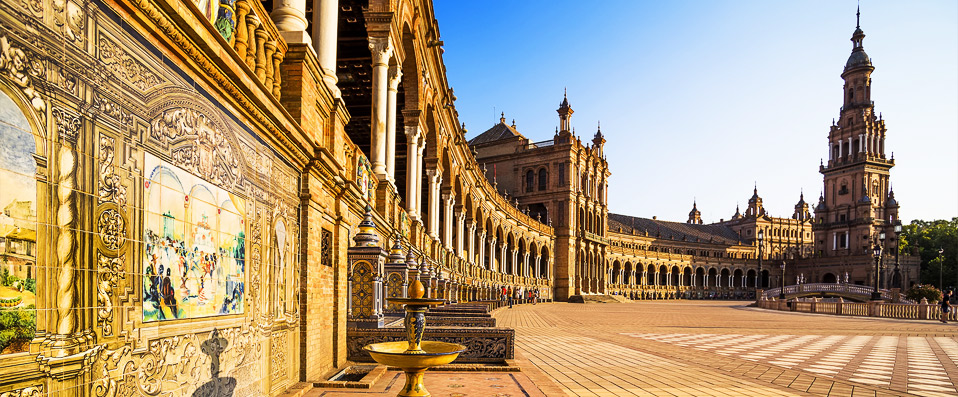
Why visit Seville?
With its stunning architecture, warm hospitality, delicious tapas, festive culture and passionate flamenco music and dance, the Andalusian capital offers an unforgettable experience for travellers. Add to this a warm and pleasant climate throughout the year and Seville makes for an excellent holiday destination.
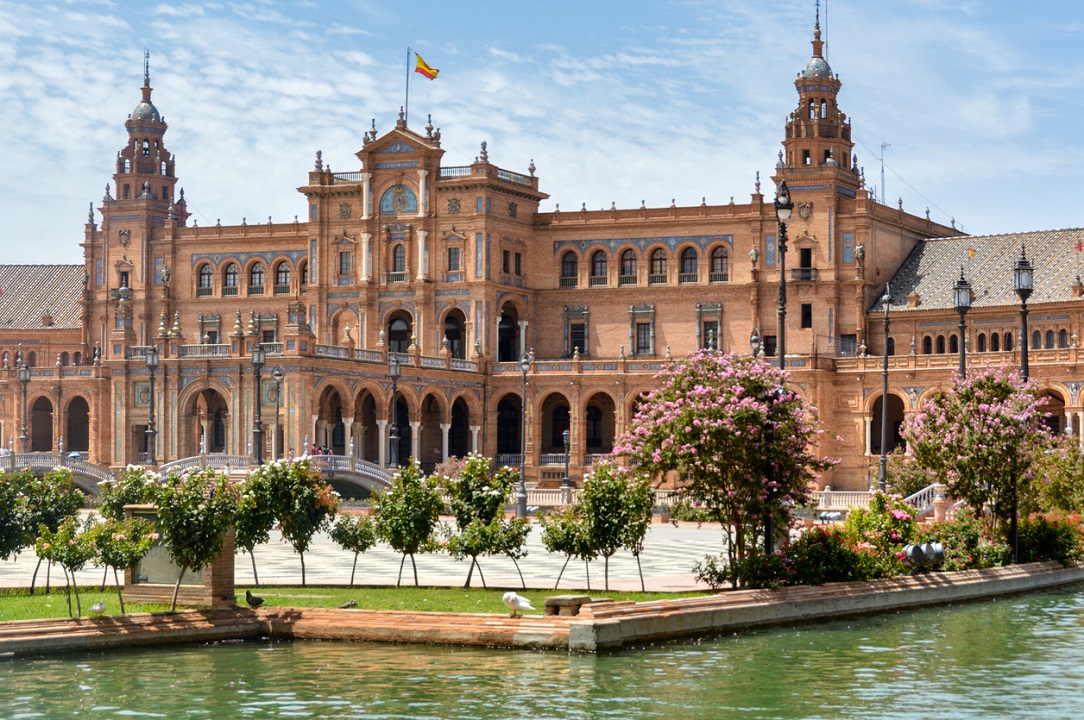
1. A Rich Historical Heritage & a Modern Flair
One of the primary reasons to visit Seville is its rich historical heritage. The city's history dates back over 2,000 years, and its streets are a testament to its storied past. As you stroll through the town, you'll encounter plenty of historic landmarks, including Seville Cathedral, the largest Gothic cathedral in the world, which also houses Christopher Columbus' tomb. The Alcázar meanwhile, is a stunning Moorish palace complex, with intricate tilework and lush gardens. Exploring these historical sites will transport you to a bygone era, although that said, the city also boasts some more contemporary surprises! Here are some of the city's must-see sights:
- The Seville Cathedral and the Giralda – a former mosque, the cathedral offers a mixture of architectural styles which give it a unique charm, while the Giralda, the famous minaret topped by a bell tower, offers a spectacular view over the city, 100 meters up.
- The Plaza de España – one of the most emblematic sights in the city, located within the pretty Maria Luisa Park, this plaza was built for the Ibero-American Exposition of 1929, mixing Baroque, Renaissance, and Moorish styles.
- The Real Alcazar – a UNESCO World Heritage Site, this unique and utterly breathtaking palace blends Moorish and Christian influences its stunning architecture and beautiful gardens
- The banks of the Guadalquivir River – strolling along these beautiful banks is one of the most pleasant activities in town.
- The Banderas Patio – located in the heart of the Santa Cruz neighbourhood (the former Jewish Quarter), this magnificent public courtyard boasts a typical Andalusian aesthetic.
- The Casa de Pilatos – a sumptuous 15th-century building with magnificent architecture blending Gothic, Mudejar and Renaissance styles.
- Iglesia de San Luis de los Franceses – the Church of Saint Louis of France, located in the historic city centre, is a beautiful example of 18th-century Baroque architecture with a unique colorful facade.
- Las Setas – in the historic city centre, this large and primarily wooden contemporary structure consists of six mushroom-like parasols, inspired by the vaults of the city's cathedral and the ficus trees in the nearby Plaza de Cristo de Burgos. Las Setas is home to a traditional market, restaurants, a performance square, an archaeological museum, and a panoramic terrace.
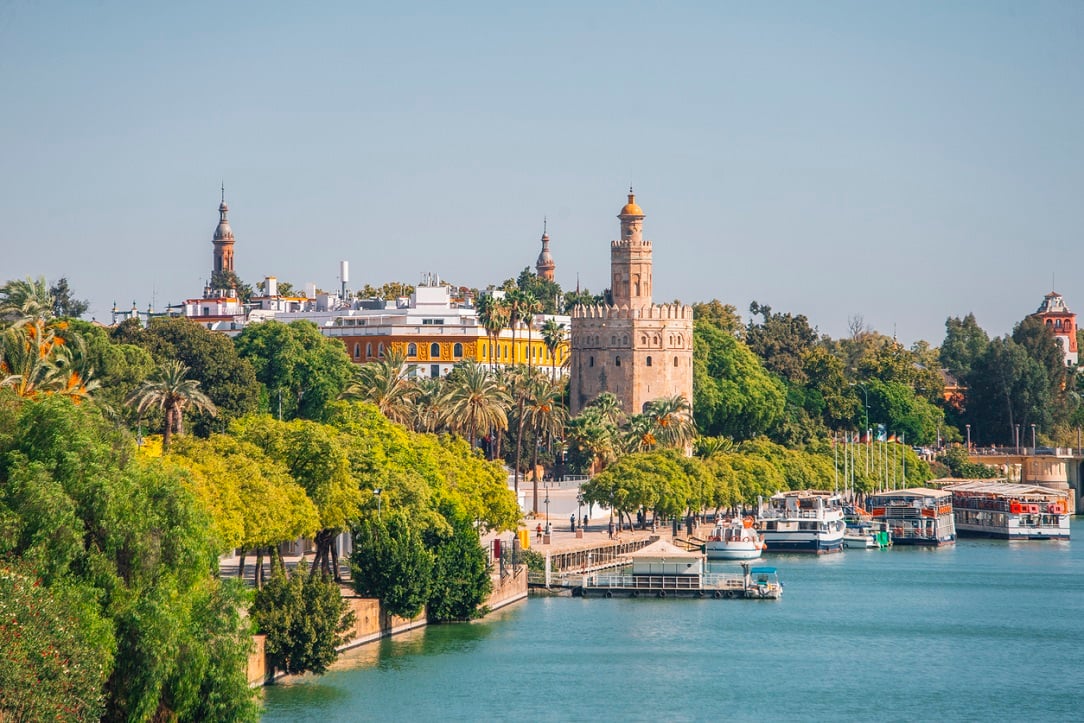
2. Unique Activities & Vibrant Flamenco Culture
Seville offers a wide range of unique activities for travellers looking to explore the city beyond its most famous landmarks. Here are some unique and enjoyable activities to consider while in Seville:
- A Flamenco Experience: when visiting Seville, watching a traditional flamenco show is an absolute must, and there are plenty of options to choose from around the city, including the Théâtre de la Maestranza, the Tablao Los Gallos, or La Carboneria. For an even more unique experience, consider taking a flamenco dance or guitar lesson, a great way to gain a deeper appreciation for this passionate and complex art form.
- A Horse-Drawn Carriage Ride: explore Seville with a horse-drawn carriage ride through the historic centre, this is can be a fun activity during the day with kids, or a romantic choice in the evening when the streets are illuminated
- Bike Tours: a very bike-friendly city, Seville has an extensive network of bike lanes. This is a fun and eco-friendly way to navigate Seville's charming neighbourhoods, and there are also numerous guided bike tours you can sign up to.
- A Cooking Class: participate in a cooking lesson and learn to prepare traditional Spanish dishes, such as paella or gazpacho. You'll not only enjoy a delicious meal but also gain culinary skills to take back home with you.
- A Cruise on the Guadalquivir River: take a scenic boat cruise along the Guadalquivir River either during the day or in the evening, and take in city's skyline and riverbanks from a different angle.
- Bullfighting: while bullfighting may not be for everyone, a visit to the Plaza de Toros de la Maestranza will provide insight into a significant part of Spanish culture and history.
- Ceramic Workshop: Seville is famous for its colorful ceramics, with the industry's production centre having historically been located in the Triana neighborhood. Visit to a local ceramic workshop to see the artisans at work, and maybe even try your hand at painting your own ceramic piece.
- A Hike in Caminito del Rey – less than two hours by car from Seville, this spectacular route is one of the most incredible natural sites in the region, a candidate for UNESCO World Heritage Site status and well worth a day trip from the city. It is a unique aerial path in the Desfiladero de los Gaitanes gorge, suspended 100 metres up from the Guadalhorce River below.
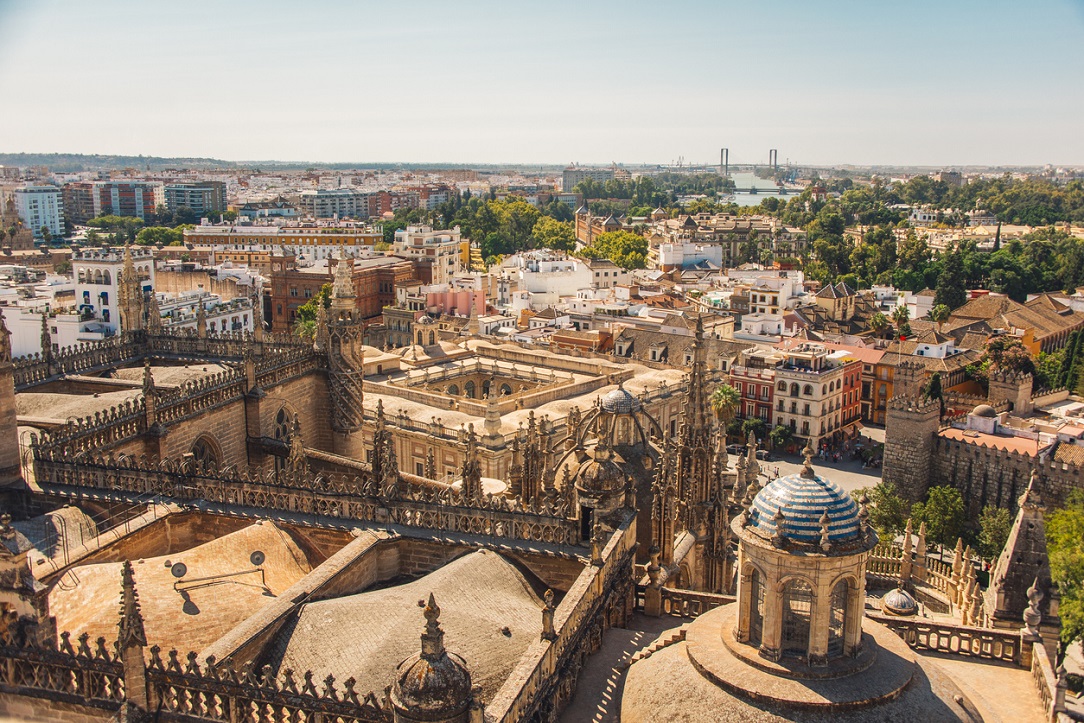
3. Culinary Delights
Seville is a food lover's paradise. The city's culinary scene is characterized by its delectable tapas, fresh seafood, and traditional Andalusian dishes. Don't miss the chance to savor authentic Spanish cuisine at local tapas bars. Try classics like gazpacho, paella, and salmorejo. Wash down your meal with a glass of regional wine or a refreshing sangria. Seville's food culture will leave your taste buds singing with joy.
4. Fascinating Museums
As you would expect of a city with such a rich heritage, Seville has its de facto share of museums to discover, offering a greater insight into its unqieu history and culture. Here are some of the best museums to visit:
- Museo de Bellas Artes – the city's Museum of Fine Arts is often referred to as Spain's "second art gallery" after the Prado in Madrid. With more than a thousand paintings and sculptures, it houses a remarkable collection of Spanish art, including works by famous artists such as Velázquez, Murillo, and Zurbarán. The museum is set in a beautiful 17th-century building.
- Museo del Baile Flamenco – immerse yourself in the world of flamenco at the Museum of Flamenco Dance. It offers a unique opportunity to learn about the history and cultural significance of this passionate art form. The museum often hosts live performances, adding an extra layer to the experience.
- Museo de Artes y Costumbres Populares – housed in the Mudejar Pavilion at the Plaza de América, the Museum of Popular Arts and Customs presents a fascinating collection of folk art and traditions from Andalusia. You'll find exhibits on traditional clothing, crafts, and cultural practices.
- Centro Andaluz de Arte Contemporáneo (CAAC) – located on the grounds of the Monastery of Santa Maria de las Cuevas, the Contemporary Art Center features a wide range of temporary exhibitions and installations. The combination of modern art and the historic setting makes it a unique experience.
- Pabellón de la Navegación – this interactive museum is dedicated to Seville's maritime history and its role in the age of exploration. It's housed in a contemporary building that provides insight into the city's connections to the New World.
- Real Fábrica de Tabacos – while not a traditional museum, the Royal Tobacco Factory is a historic building that is part of the University of Seville, and has been the setting for numerous literary works such as Bizet's "Carmen." You can take a guided tour to learn about its history and its role in the tobacco industry.
- Centro de Ciencia Principia – ideal for families and science enthusiasts, Seville Science Centre is an interactive science museum offering a wide range of hands-on exhibits and experiments.
- Hospital de los Venerables Sacerdotes: this Baroque building houses the Velázquez Center, dedicated to the life and work of the renowned painter Diego Velázquez. The setting is a work of art in itself and provides a unique context for understanding the artist's legacy.
- Seville Aquarium – a great choice for families, it is home to more than 7,000 specimens including more than 400 different species, each more beautiful than the next.
How to choose the right neighbourhood in Seville?
When planning a trip to the enchanting city of Seville, one of the crucial decisions you'll face is selecting the right neighborhood to stay in. The city offers an array of diverse neighborhoods, each with its unique charm. Whether you crave the old-world charm of Santa Cruz, the lively flamenco spirit of Triana, or the more modern buzz of Alameda de Hércules, finding the ideal neighborhood can significantly enhance your experience. In this guide, we'll explore the best neighborhoods in Seville, helping you make an informed decision for an unforgettable holiday.
- Santa Cruz: if you want to immerse yourself in the heart of historic Seville, Santa Cruz is the place to be. It's located near the city's major attractions, including the Seville Cathedral and the Alcázar. The winding, narrow streets of Santa Cruz are lined with plenty of charming boutique hotels, and luxury guesthouses. Enjoy a taste of old-world Seville and exploring the city on foot.
- Triana: located across the river from the city center, this is a lively and distinct neighborhood with a strong cultural identity, famous for its ceramics and flamenco culture. Triana also has a vibrant nightlife scene with numerous bars and restaurants.
- Arenal: a bustling neighborhood near the river, this is a great choice if you want to be close to the Maestranza bullring and the iconic Las Setas mushrooms, this area offers a mix of accommodations, including numerous luxury hotels and boutique options. It's also near to the shopping district and lively Plaza Nueva.
- Macarena: a more local, residential area located north of the city centre. It's known for its traditional Andalusian vibe and markets. While not be as touristy, it provides an authentic experience of daily life in Seville. There are some charming hotels to be found here.
- Alameda de Hércules: if you're looking for a more modern and trendy neighborhood, then this area is filled with hip bars, cafes, and street art, offering a vibrant atmosphere. It may be a bit further from the main historic sites, but provides a unique city break experience.
- Nervión: a quieter more residential neighborhood to the east of the city centre, while also providing easy access to the rest of the city. It is is home to shopping centers, parks, and a variety of hotels, making it a great option for families and those seeking a more relaxed stay.
- Los Remedios: on the opposite side of the river from Triana, this is a more upscale, tranquil neighborhood known for its wide avenues and elegant buildings. You'll find a number of luxurious four-star and five-star hotels here.
At VeryChic we are particularly fond of Spain, and one of our favourite destinations is Andalusia. So now that you have an idea of the different neighbourhoods of Seville, why not take a look at our selection of hotels in Seville and around, hand-picked by our travel experts, and enjoy an extraordinary stay in this spectacular destination.
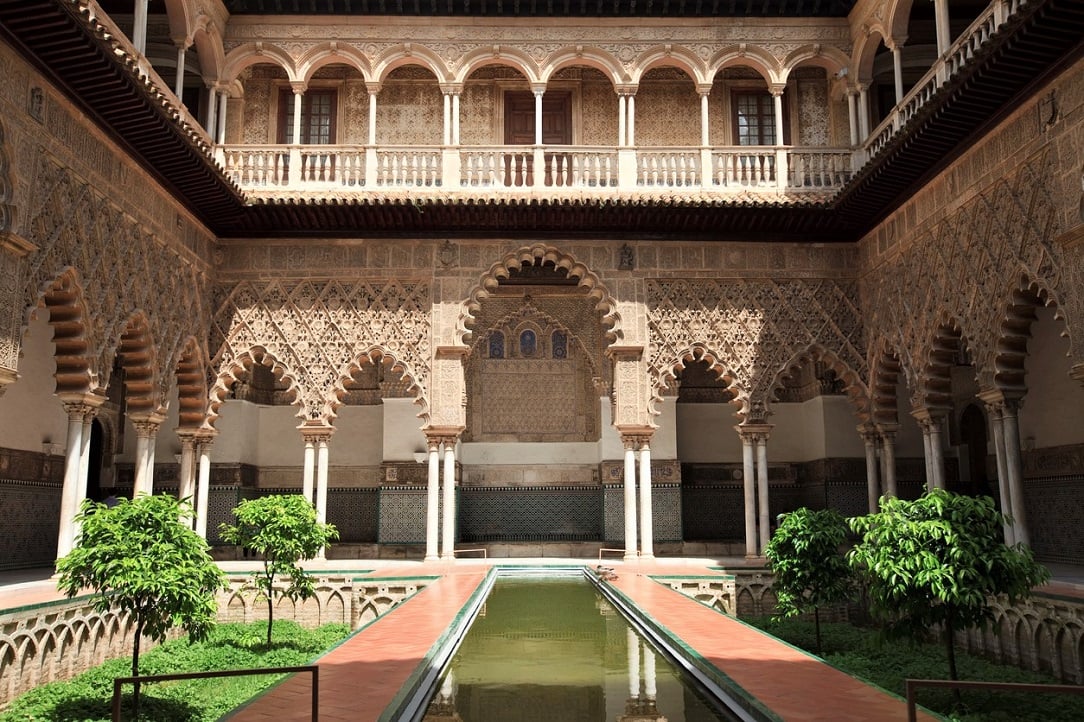
When to visit Seville?
Being in the heart of Andalusia, in southern Spain, Seville enjoys a Mediterranean climate, characterized by long, hot summers and mild winters. This climate is ideal for outdoor exploration and relaxation. Whether you want to wander through the city's parks and gardens, enjoy a sunny day by the river, or savor a meal on an open-air terrace, Seville's climate makes it possible throughout most of the year.
-
Seville in spring:
Perhaps the perfect season for visiting the city, enjoy constant sunshine and an average temperature of more than 20 degrees – while also avoiding the more intense summer heat! -
Seville in summer:
If you don't mind the more intense heat – and enjoy the idea of adopting the afternoon Spanish siesta – then summer brings constant sunshine and high temperatures. One thing to not however, is a number of establishments close in the month of August. -
Seville in autumn:
Similar to the spring, with more than 20 degrees on average, this season is a happy middle ground in terms of the weather, and also means you avoid the tourist crowds. One thing to note however, is that October can bring some rain showers. -
Seville in winter:
To really avoid the tourist crowds, consider a winter escape to Seville. The sun continues to shine, and temperatures during the day still rise to about 16-18 degrees, Seville is very pleasant to visit in the winter season.
How do I get to Seville?
Seville Airport (or officially San Pablo International Airport) is located about 10 kilometers (6 miles) north of Seville city centre. It offers a wide range of domestic and international flights, making it a convenient and the most popular of entry points for international travellers. The airport is within a few hours flights from many major cities across Europe. Once you arrive at the airport, you can take a taxi, airport bus, or private transfer to the city centre.
Alternatively, if you are arriving from elsewhere within Spain, you can take the AVE high-speed train to Seville. The Santa Justa train station is the city's main train station, and it's well-connected to major Spanish cities like Madrid, Barcelona, and Malaga. The AVE train offers a comfortable and efficient way to travel.
